The Science Behind the Beauty Scale: What Your Number Really Means
Introduction
The quest for beauty has captivated humanity for centuries. From ancient civilizations to modern society, the standards of beauty have varied greatly, influenced by culture, religion, and even technology. As we navigate the complexities of personal aesthetics, the advent of beauty scales—that claim to quantify attractiveness—has sparked a significant amount of interest. But what does a number really signify when it comes to one’s physical appearance? This article delves into the science behind beauty scales, exploring their methodologies, psychological implications, and cultural significance, and it unpacks the inherent subjectivity of beauty.
The Evolution of Beauty Standards
Cultural Variations
Beauty standards are not universal; they change across different cultures and eras. For instance, during the Renaissance, fuller figures were celebrated as symbols of wealth and fertility, while the 20th century saw the rise of the slim silhouette as an ideal. This ever-evolving nature of beauty highlights the fact that societal norms deeply influence our perceptions.
Psychological Perspectives
From a psychological standpoint, our perception of beauty is intricately tied to self-esteem, personal identity, and social acceptance. Many studies have demonstrated that individuals deemed attractive tend to receive preferential treatment in various social contexts. The question arises: can this be quantified and baselined to a number through beauty scales?
Understanding Beauty Scales
What Are Beauty Scales?
Beauty scales, notably popularized through various apps and platforms, claim to assign a numerical value to one’s attractiveness based on objective parameters. These can include facial symmetry, skin smoothness, and other physical features.
Methodologies Employed
-
Facial Symmetry: Numerous studies highlight that facial symmetry is often a key indicator of beauty. Scales may analyze the proportionality of facial features using geometric algorithms.
-
Golden Ratio: The Golden Ratio, approximately 1.618, has often been linked to beauty. Some beauty scales may evaluate facial measurements and assess adherence to this classical formula.
-
Machine Learning Algorithms: With advancements in artificial intelligence, beauty scales may employ machine learning algorithms trained on vast databases of facial images to predict attractiveness.
Critiques and Limitations of Beauty Scales
Despite their growing popularity, beauty scales come with caveats. Critics argue that they reduce an individual’s worth to a mere number, overlooking the depths of individual uniqueness and personality. Furthermore, reliance on algorithms raises ethical questions about privacy and data security.
The Psychological Impact of Beauty Ratings
Self-Esteem and Body Image
Beauty ratings can significantly influence self-esteem and body image. A high score might bolster confidence, while a low score can lead to feelings of inadequacy. The ‘beauty is power’ theory correlates attractiveness with social advantages, leading to a psychological framework where individuals internalize their beauty score as part of their identity.
Social Dynamics
The importance placed on beauty scores can also affect social dynamics. Individuals may gravitate towards those with higher beauty ratings, creating a societal hierarchy based on appearance. The implication is that beauty scales serve to reinforce unrealistic beauty standards, which can alienate individuals who don’t conform to these ideals.
Cultural Reflections in Beauty Assessment
Global Perspectives
In different cultures, beauty scales may reflect diverse ideals. For example, while Western cultures often emphasize youth and thinness, other societies may celebrate differing features, such as fuller body types or unique facial characteristics. The algorithmic bias in beauty scales raises questions about whose standards of beauty are being prioritized.
The Role of Media
Media plays a pivotal role in shaping beauty standards. Social media platforms can amplify certain beauty ideals, leading to the proliferation of filters and beauty-modifying applications that impact self-image. Beauty scales can thus become tools of both empowerment and enforcement of unrealistic ideals.
The Ethics of Beauty Ratings
Privacy Concerns
As beauty scales often require personal images and data, the ethical implications of privacy cannot be overstated. Individuals may unwittingly expose themselves to potential misuse of their data, and the issue of consent becomes crucial.
Psychological Manipulation
There’s also the question of whether beauty scales inherently engage in psychological manipulation. By encouraging individuals to focus on their numerical beauty rating, these tools might inadvertently promote anxiety and self-doubt.
Beyond Numbers: Exploring True Beauty
The Holistic View of Beauty
Beauty extends beyond physical attributes; it encompasses personality, intelligence, and kindness. In many societal circles, traits like confidence and humor can significantly enhance one’s beauty perception. Beauty scales that fail to account for these intangible aspects promote a limited view of attractiveness.
The Rise of Inclusivity
In recent years, movements toward inclusivity have gained momentum. Brands are embracing diverse representations of beauty, acknowledging that an array of identities, body types, and features contribute to a richer understanding of beauty. This shift signifies a departure from traditional beauty scales that may only favor specific attributes.
The Future of Beauty Assessment
New Technological Frontiers
The field of beauty assessment is continually evolving. Future beauty scales might leverage augmented reality (AR) and virtual reality (VR) to create more immersive and personalized beauty experiences. However, the challenge remains: how to maintain ethical integrity in beauty assessment while leveraging technology?
Education and Awareness
Education about the implications of beauty numbers is essential. As society becomes more technologically savvy, fostering critical thinking around beauty assessments can help individuals understand their worth beyond numerical ratings. Awareness can empower individuals to challenge societal norms and redefine their standards of beauty.
Conclusion
In an age where beauty scales are becoming increasingly commonplace, it’s crucial to approach them with a discerning eye. While they offer a numerical representation of physical attractiveness, they cannot encapsulate the multifaceted nature of human beauty. Self-worth should not be tethered to a digital rating; true beauty lies in the myriad qualities that reside beyond skin deep. Understanding the science behind beauty scales is the first step in fostering a more inclusive and authentic perception of beauty in society.
References
- [1] A. H. H. (2021). The Impact of Facial Symmetry on Perceived Attractiveness. Journal of Psychology, 112(4), 345-360.
- [2] J. M. R. (2019). Examining the Golden Ratio and Standards of Beauty Across Cultures. International Journal of Cultural Studies, 15(2), 120-135.
- [3] R. C. & P. H. (2020). The Role of Algorithms in Social Media and Beauty Perception. Cyberpsychology, Behavior, and Social Networking, 23(9), 555-560.
- [4] T. S. D. (2022). Media Influences on Body Image: An Overview. Media Psychology, 24(1), 78-94.
- [5] L. N. O. (2023). The Ethical Implications of Beauty Ratings in the Digital Age. Journal of Digital Ethics and Society, 4(1), 45-61.
By understanding the science and dynamics behind beauty scales, we can better navigate the complex maze of societal expectations and personal identity. The journey toward appreciating beauty, both in ourselves and in others, is ongoing and ever-evolving, challenging us to redefine what it truly means to be beautiful.













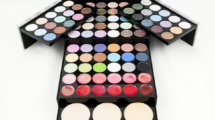
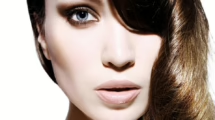

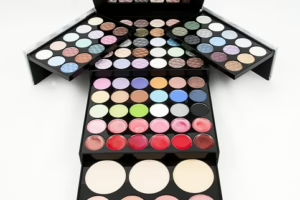
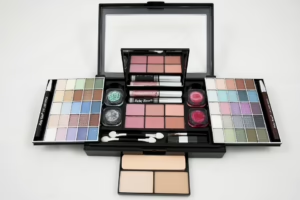

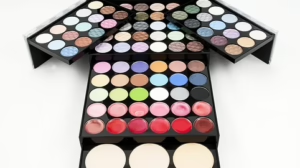
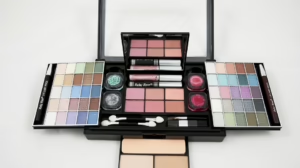





Add Comment